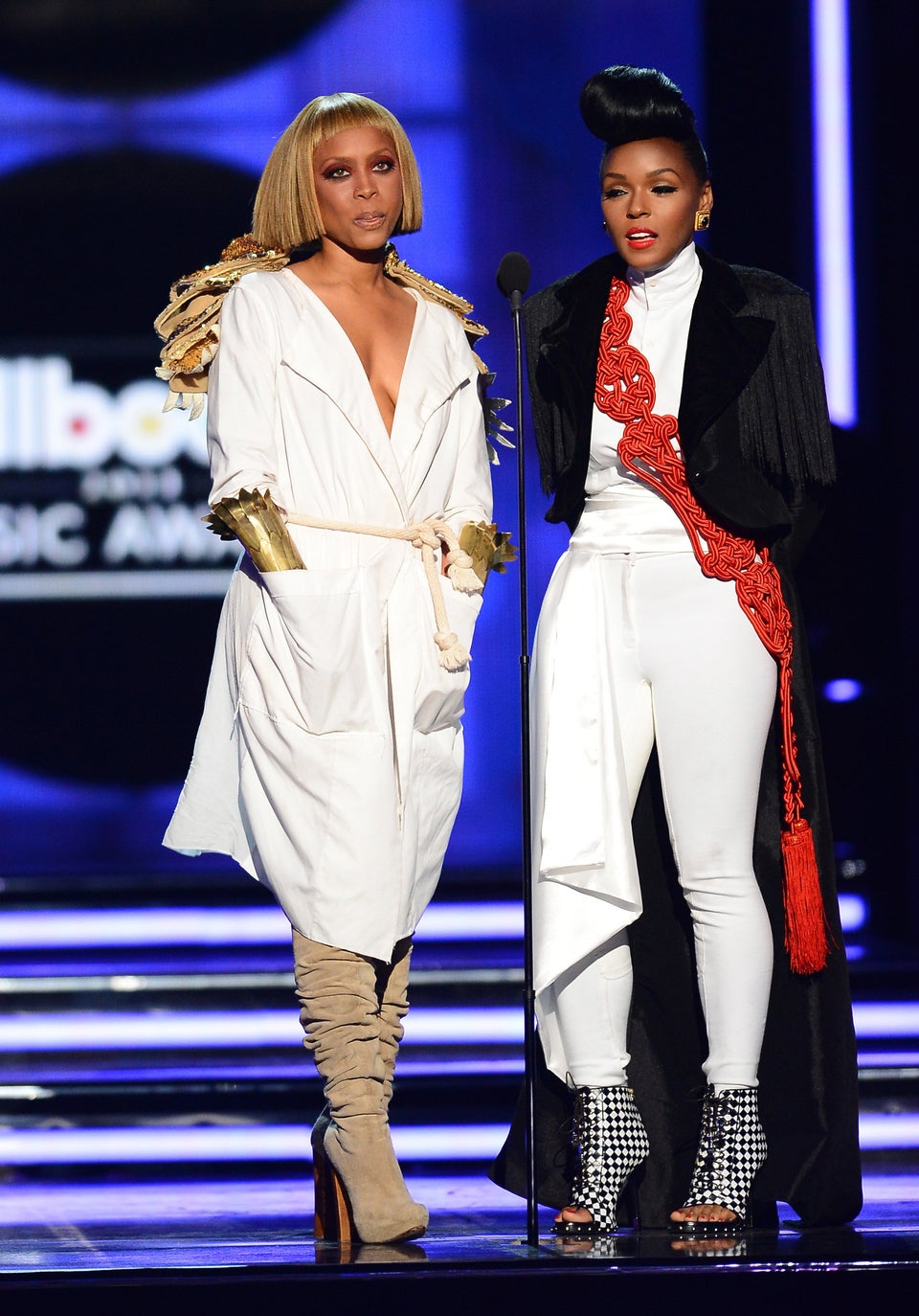
The following article is provided by Rolling Stone.
By Matt Diehl
"A lot of the songs have come to me in my dreams," Janelle Monáe says of the ambitious compositions captured on The Electric Lady, the provocative, genre-defying concept album that the iconoclastic Monáe has just released. Monáe, of course, has never been one for pigeonholing. While her kinetic stage presence, relentless discipline and sheer musical talent pay vivid homage to soul greats like James Brown, Monáe sonically transcended the genre bounds of R&B on her startling full-length debut, The ArchAndroid (2010).
An unlikely, Philip K. Dick-style meditation on technology and humanity, The ArchAndroid was a concept album centered around the exploits of a fictional protagonist, Cindi Mayweather. It rocketed Monáe from an unknown from Kansas City trying to make it in Atlanta's cosmopolitan music scene to a next-big-thing: the year's critical-mass It Girl.
Monáe's revolutionary instincts didn't just rest in music and lyrics, but in her visual persona: her shellacked pompadour and sleek yet demure tuxedos were unlike anything in contemporary urban music and pop in general, toying with the expectations of gender, identity and sexuality foisted on new artists. But Monáe takes the maverick bent of her previous work to new heights on The Electric Lady. As a caller to an interplanetary radio show states in the interlude "Good Morning Midnight," "I'm going to the club tonight and break some rules . . . we're going to break all of 'em. We're going to start at the top and work our way down."
According to Monáe, The Electric Lady provides the next chapter in the Cindi Mayweather odyssey. "It's the origin story, the part where the ArchAndroid realizes she has superpowers," she tells Rolling Stone. That Monáe dives into Public Enemy-style raps at times heightens the raised-fist social consciousness of Electric Lady's vibe.
"I want to redefine beauty and goals for young women," she says. "It's about breaking down stereotypes, fighting against oppression, trying to save the world."
Inspiration came from unexpected avenues, like meeting "strong, 21st-century-breed women" like First Lady Michelle Obama, whom Monáe encountered at a charity function at the White House. "When thinking about who the Electric Lady is, I think about women standing up and being the voice of our community," Monáe explains. "She is an ambassador of great change and comes in different shapes, sizes, and colors."
Monáe also found liberation in facing her own issues in therapy sessions. "I began painting this female silhouette every night, and I didn't understand exactly why. I spoke to my therapist, who said, 'You should name her.' I was freaked out – I had a visceral reaction. I was making a mythical figure tangible, and the words 'electric lady' came to me."
To help realize this vision, Monáe brought together a star chamber of musicians who are rebels in their own right. Erykah Badu righteously funks up "Q.U.E.E.N.," while Solange and Esperanza Spalding also make crucial appearances. Amid all the sisterly empowerment, however, Monáe finds room for male energy, as when R&B rule-breaker Miguel duets with her on the sexy slow jam "Primetime." "When I was writing 'Primetime,' I wanted to do a love song with a male," she explains. "I was so moved by [Miguel's 2012 hit] 'Adorn' – it touched a place in my heart. While I had something to say from the female perspective, he can communicate with women in a way that's poetic and beautiful."
The Electric Lady is indeed an auteurist effort: in addition to writing and performing, Monáe also produced and even engineered much of the album, giving direction to one her greatest musical influences on "Givin Em What They Love," a collaboration with none other than Prince (who's also thanked as a "co-conspirator"; Monáe also says to expect a Prince remix of "Q.U.E.E.N." in the future).
"Prince contributed amazing work," she says. "I can't believe I had the opportunity to produce one of my heroes. But it was very organic. He's someone I can call for advice. I appreciate men who are in touch with both of their sides."
The Electric Lady demonstrates many of Monáe's different dimensions as well. For all its radical syncopation, sloganeering and revolution-speak, Monáe's latest also finds her at her most approachable. "Primetime" sounds like a potential radio hit, while Monáe lets her hair down, literally, in the Clockwork Orange-themed video for "Dance Apocalyptic" (not to mention wearing body-conscious clothes and bling). "I won't become a slave to my own belief system, or my image, or how I have my hair," she says.
Monáe says she wants to make musical history with The Electric Lady, so she confronts it directly. In the liner notes, she notes her inspirations for each song: "Suite V Electric Overture," she writes, "is inspired by Stevie Wonder listening to Os Mutantes on vinyl (circa 1973)." "Dance Apocalyptic," meanwhile, shouts out "Michael Jackson's glistening Jheri curl in 'Thriller' and Bo Diddley's tremolo guitar."
"I'm inspired by Bo Diddley, a true leader of R&B and blues," she says. "My goal was to make of the best R&B albums this year, doing justice to all the wide subgenres, going through all their amazing moments. The album travels through the spectrum – from Jimi Hendrix to Anita Baker to Sly Stone – all the way to tomorrow. Black music bridges the gap between the past and future. My response to that is to keep the torch burning for the next generation."
